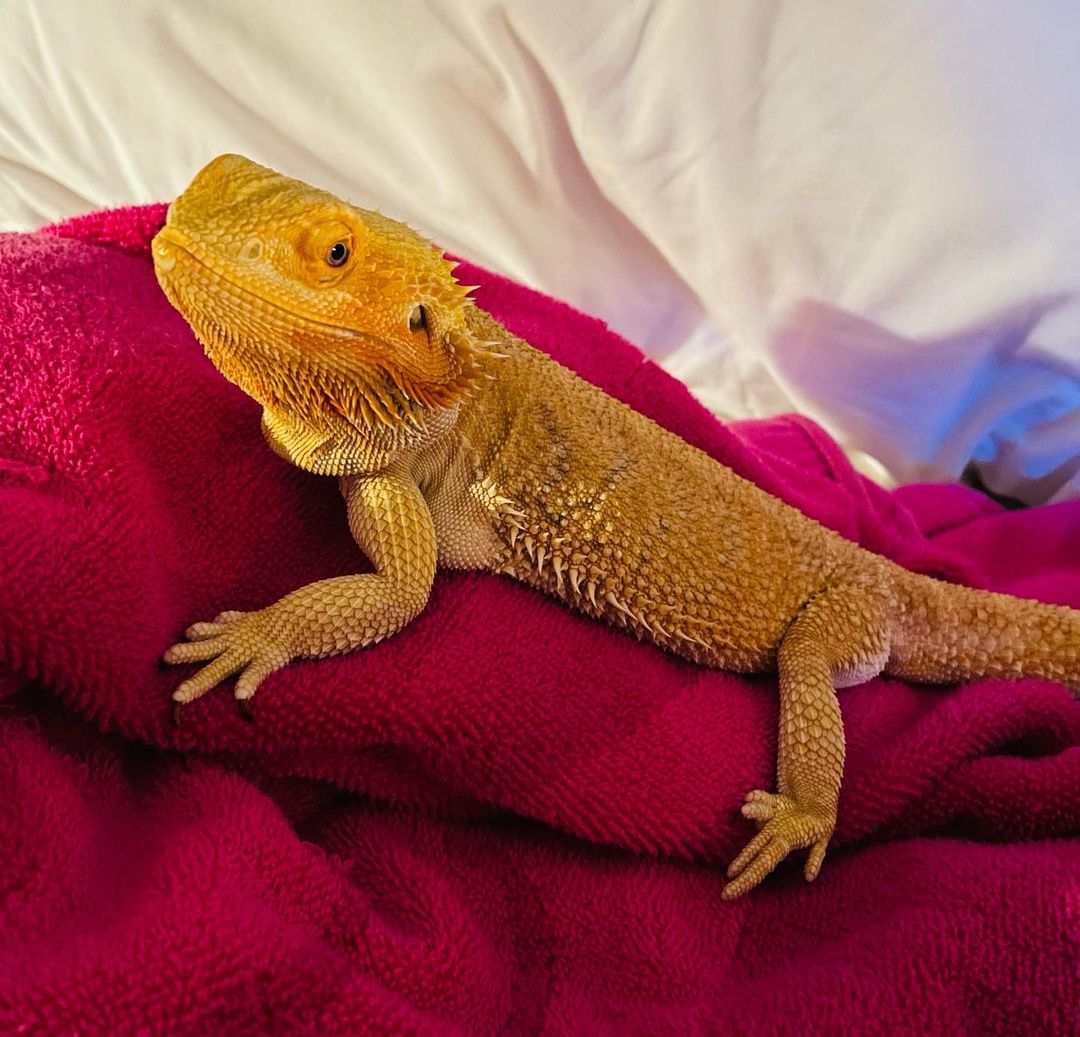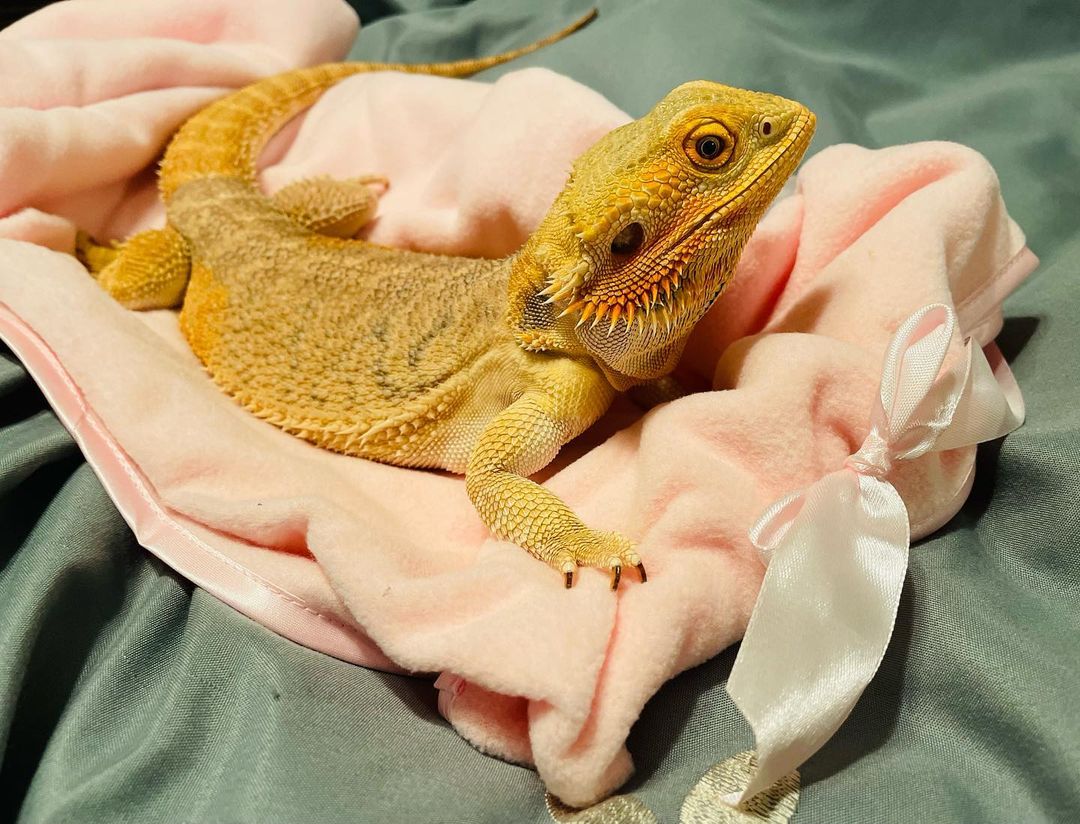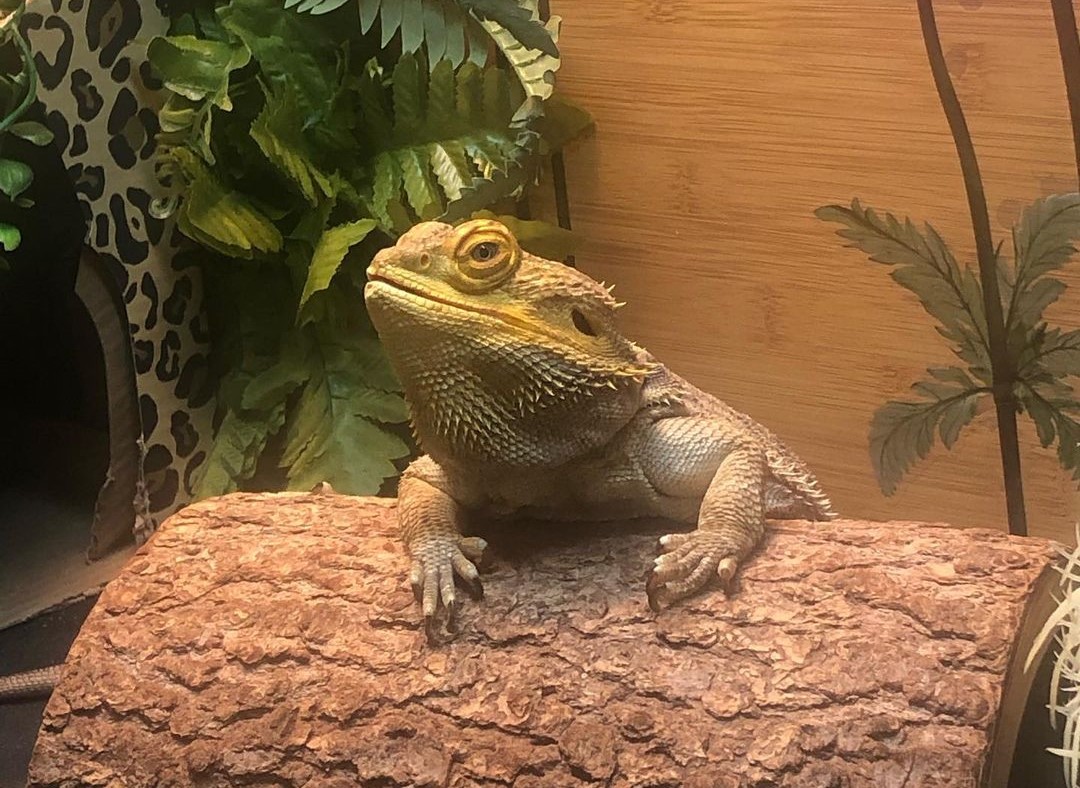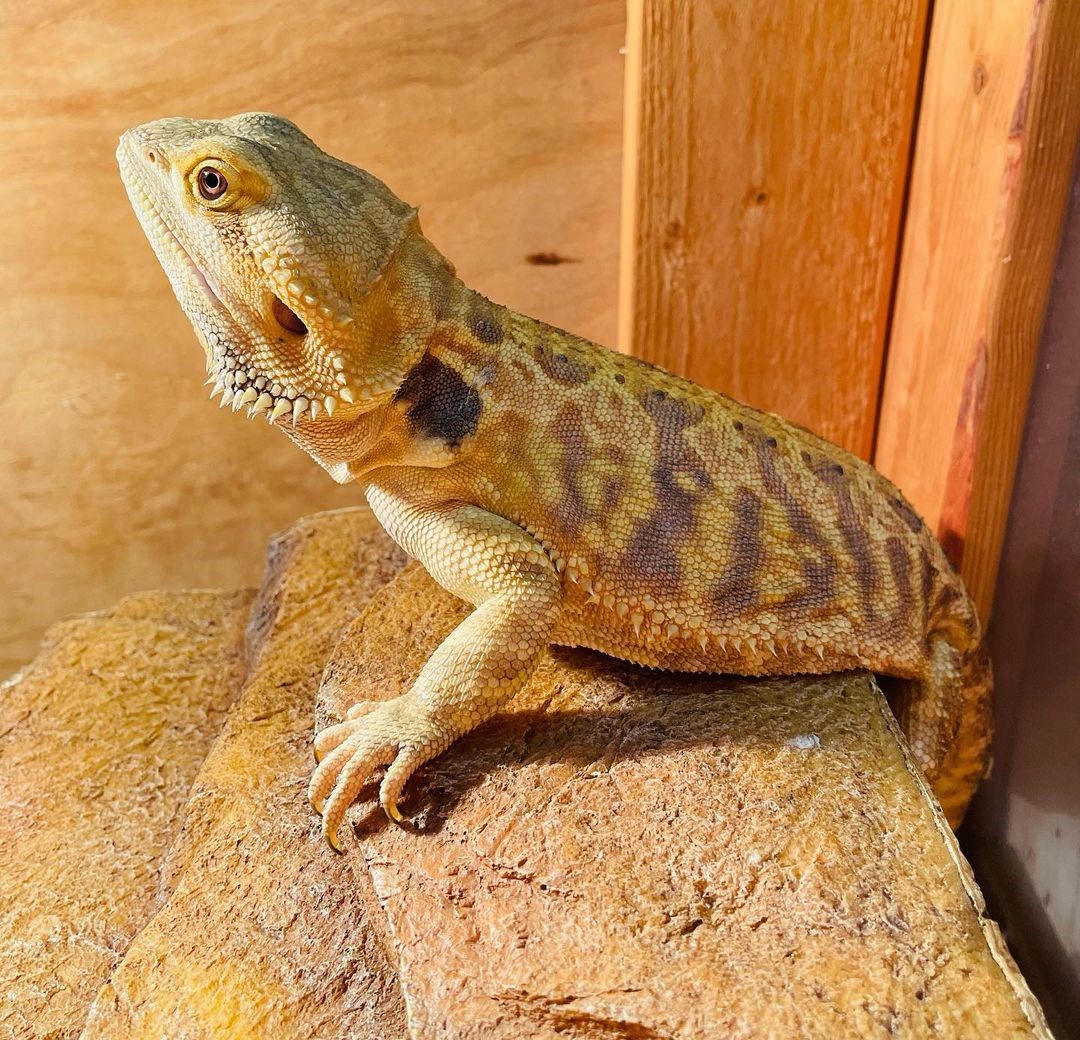Have you ever wondered to yourself “Do bearded dragons pee?”
Well, get ready for the big reveal because the answer is a resounding YES!
In this exciting article, we’ll spill the beans (or should we say, the urine?) on all things bearded dragon pee.
We’ll delve into the captivating details of how they handle their bathroom business, and what you should expect their pee to look like.
Let’s jump right in and get ready for some reptilian restroom revelations!
Table of Contents
Bearded Dragon Urinary System Explained

Bearded dragons have a magical cloaca that serves as an all-in-one exit point for their urinary, digestive, and reproductive systems. When it’s time for them to pee, they excrete uric acid, resulting in a white, semi-solid substance that might look deceivingly like something else (but rest assured, it’s not feces!).
This clever adaptation actually has an essential purpose. No other than Survival. Why? Because it allows bearded dragons to conserve water, which is crucial for animals living in arid habitats.
Uric acid, a byproduct of protein digestion, requires less water than traditional urine. It’s nature’s way of helping these incredible creatures thrive in their environment!
So, next time you witness your bearded dragon’s unique bathroom habits, remember that their pee is a remarkable and efficient system ideally suited for their arid lifestyle. Consider yourself well-versed in the fascinating world of bearded dragon pee!
Observations of Bearded Dragon Urination
If you have a bearded dragon as a pet, you may have noticed a chalky and white substance. Don’t fret! This is how bearded dragons urinate. They pass out uric acid, a concentrated form of waste, which looks far different from what we typically associate with urination.
This uric acid is often mixed with feces when excreted. You can identify it by its white or yellowish color. It’s usually found at the end of the stool. Observing your bearded dragon pee might seem odd, but it’s vital for their health check.
Normal Urine
A healthy bearded dragon’s urine isn’t liquid like ours. It’s a white, semi-solid mass of uric acid. It comes out along with feces from the cloaca.
This uric acid is an end product of protein digestion. It conserves water in the body. Perfect for a creature from dry habitats.
Uric Acid Deposits
Uric acid deposits are a normal part of bearded dragon pee. They appear white or slightly yellowish. These semi-solid deposits sit on top or alongside the feces. It’s an ordinary sight for bearded dragon owners.
But, abnormal deposits are cause for concern. They can look gritty, hard, or large in volume. These signs can indicate health issues.
Urine Volume
Bearded dragons conserve water. They don’t urinate often. Their urination pattern depends on diet and hydration. A hydrated bearded dragon will have more urine deposits.
In contrast, a dehydrated dragon can show infrequent urination. Their deposits can also be hard and gritty. Such signs should alert you to potential dehydration.
Variation in Color
Normal bearded dragon pee, the uric acid, is usually white or off-white. A slight yellow tinge is also common. But, color changes can signal health issues.
For example, orange or hard, gritty deposits may suggest dehydration. If the uric acid is green, it could indicate an excess of certain vitamins. Red or pink may mean blood, an alarming sign.
In any case, if the color deviates from white or yellow, seek a vet’s advice. These color changes often signify something is amiss. It’s crucial to act as soon as possible.
Bearded Dragons Urinary Habits

Let’s take a closer look at the fascinating urinary habits of bearded dragons! These remarkable reptiles have a urinary system that sets them apart from other pets and reptiles. Their efficient adaptations are a testament to their survival skills in arid climates.
Get ready to discover the incredible world of bearded dragon pee and unravel the secrets behind their unique urinary habits.
How Do Bearded Dragons Pee?
After answering your question on a Bearded Dragon pee, you might wonder: How does a Bearded Dragon pee? Well, seeing is believing. Here’s a video from YouTube that vividly shows this process.
In the video, you’ll witness a remarkable sight: a bearded dragon peeing. But that’s not all! You’ll notice a off-white or yellowish waste alongside a small amount of feces.
This intriguing deposit is none other than their unique pee, containing uric acid. It’s a captivating glimpse into how these water-conserving reptiles adapt to arid environments.
Differences From Other Reptiles
Now, how do bearded dragons’ urinary habits differ from other reptiles?
Do bearded dragons pee in the same way that other reptiles do? Not exactly, despite the fact that they both excrete uric acid, but mammals excrete urea.
Take snakes, for example. They excrete a more liquid form of uric acid. It’s not as thick or white as what you’d see with bearded dragons. Turtles, on the other hand, excrete a mixture of semi-solid and liquid uric acid.
These differences show how each reptile species has adapted its urinary habits to its unique environments and physiological needs. But it all boils down to one fact: like all living creatures, bearded dragons do pee.
Potential Health Issues and Abnormalities
Given the unique urinary habits of bearded dragons, abnormalities can be alarming. Changes in urine often indicate health issues. Let’s highlight some common concerns.
- Dehydration: If your bearded dragon’s uric acid appears gritty or hard, it could be dehydrated. This might stem from inadequate water intake or a too-dry habitat. Proper hydration ensures smoother, softer uric acid deposits.
- Gout: This disease, often linked to high protein intake, can affect your dragon’s urinary system. It causes uric acid buildup in the body leading to painful joint swellings. If your dragon appears to be in discomfort, seek veterinary advice.
- Impaction: If a bearded dragon ingests substrates like sand or gravel, it can lead to impaction, a blockage in the digestive system. This can affect their ability to eliminate waste, including urine, properly.
- Polyuria or Oliguria: Polyuria refers to excessive urination, while oliguria refers to decreased urination. Both conditions can indicate an underlying health problem, such as kidney disease or hormonal imbalances.
- Kidney Disease: Another serious condition tied to urinary health is kidney disease. Symptoms include changes in uric acid color and consistency, lethargy, and loss of appetite. If you notice these signs, consult a vet promptly.
It’s important to watch for potential health issues and keep track of your bearded dragon’s urination habits to ensure they stay healthy. Pay attention to any changes in their urine. You might catch any problems early on, which is crucial for their well-being.
So, stay alert and be proactive in monitoring your little dragon’s urinary habits!
Tips for Support Urinary Health

Let’s give our bearded dragons the gift of excellent urinary health! After all, a healthy urinary system is key to their overall well-being and longevity.
To ensure your scaly companion stays in top form, here are some practical tips you can follow.
Diet and Hydration
Hydration and a balanced diet play key roles. Water not only hydrates but aids digestion. Offer fresh water daily and mist your dragon’s vegetables for extra hydration. In terms of diet, balance is essential.
Too much protein can lead to uric acid buildup. Stick to a diet of insects, vegetables, and fruits.
Temperature Regulation
Next, we have temperature regulation. Bearded dragons are ectothermic. Their body temperature regulation relies on their surrounding environment. A proper temperature gradient in their enclosure aids digestion and overall health, including urinary health.
Veterinary Check-Ups
Regular veterinary check-ups are essential. Routine vet visits can help catch potential health issues early, including those related to urinary health. A vet can analyze your dragon’s uric acid and detect any problems.
Ensuring your bearded dragon’s urinary health isn’t complex. It involves regular observation, a balanced diet, and seeking vet advice.
Conclusion
And so, our journey into the fascinating world of bearded dragon pee comes to an end. It’s been a remarkable exploration, showcasing these desert-dwelling creatures’ unique and adaptable nature. Yes, bearded dragons indeed do pee!
Never underestimate the importance of your role in your dragon’s well-being. Keep them properly hydrated, provide a balanced and nutritious diet, and don’t forget those all-important veterinary visits.
Here’s to a future filled with happy, healthy dragons and to the wonders of the remarkable bearded dragon pee!
FAQs
Do bearded dragons urinate?
Yes, bearded dragons do urinate. But, they release a solid form known as urates, which typically appear white or yellowish.
What to do to support bearded dragon’s urinary health?
You can support your bearded dragon’s urinary health by ensuring a balanced diet and proper hydration.
What should normal bearded dragon pee look like?
Normal bearded dragon pee is a semi-solid deposit of uric acid, typically white or slightly yellowish. It’s usually found alongside or on top of the feces.
What does it mean if a bearded dragon’s pee changes color?
It could indicate health issues. Orange or hard, gritty deposits may suggest dehydration. Green could state an excess of certain vitamins. At the same time, red or pink can show the presence of blood if you notice any color deviations from white or yellow.
Alina Hartley is a small-town girl with a ginormous love of bearded dragons. It all started with Winchester, a baby bearded who was abandoned at the shelter by his former owners because of a birth defect that caused one front leg to be shorter than the other. Alina originally went to the shelter looking for a guinea pig, but one look at Winchester and it was love at first sight. From that day on, Alina has dedicated her life to learning everything she can about bearded dragons. She loves helping new beardie parents start their incredible journey with these magnificent reptiles.
Follow her on:
LINKEDIN
TWITTER.
Read her latest articles HERE
Learn more about her HERE.

